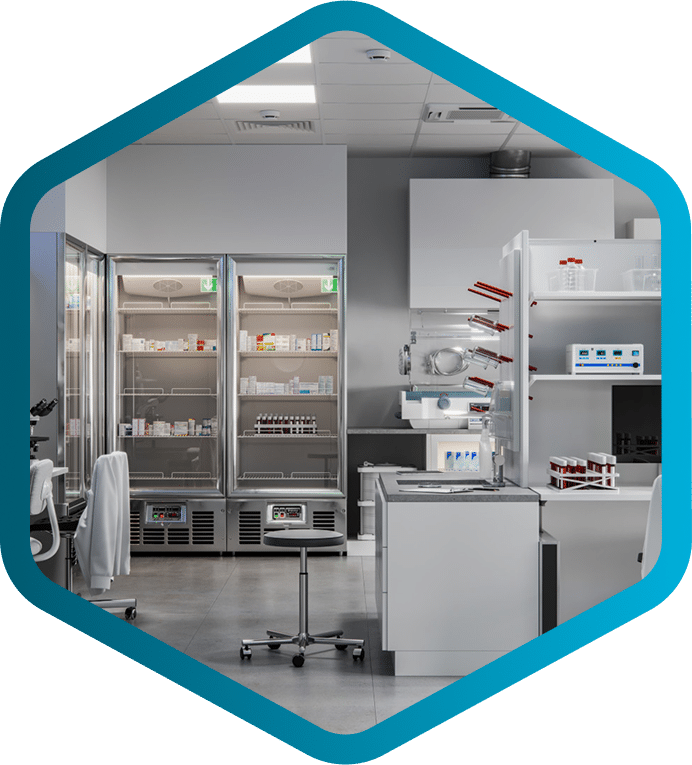Not only does the healthcare supply chain involve monitoring product acquisitions along their path from origin to destination, but many of these supplies can be a matter of life and death. On top of that, managing the medical supply chain is a significant contributor to high healthcare costs.
This is why optimizing the medical supply chain is so important. When healthcare providers procure prescription drugs, medical devices, and other goods through an optimized supply chain, they enjoy lower costs, enhanced revenues, and, most importantly, are able to provide higher quality care. To optimize the supply chain, providers need to address challenges with the following solutions:


In the healthcare industry, there is no debate about the necessity of overnight shipping. When emergencies happen, hospitals have a responsibility to address them — no matter the cost. While one or two overnight orders will not have a detrimental impact on a provider’s bottom line, regular overnighters will significantly impact profits.
Aside from emergencies, a major reason for overnight deliveries is stock outs from poor inventory management. Implementing the right software can curb these problems, limiting overnight shipments to emergencies only.
Another challenge that healthcare providers face is hidden costs. In most situations, buyers just look at the product price and shipping costs, glossing over price variances and quality changes that could result in being overcharged.
That’s where quality healthcare software comes in to create greater transparency so providers can take a more holistic approach to pricing their products, including the costs associated with moving and managing supplies.
Drug shortages have always been an issue in healthcare but seem to be increasing due to supply chain disruptions. Shortages force providers to either purchase alternatives that are much more expensive, or maintain a backup inventory of at-risk products, resulting in higher costs for inventory management.
Drug supply chain monitoring software can help providers track and plan around long-standing shortages of hundreds of drugs, and avoid getting caught off guard by sudden supply chain disruptions.
One of the biggest struggles of hospital executives is trying to make informed decisions without actionable data, advanced modeling systems, and real-time reports. One reason is that supply chain data is locked away in silos.
Several software solutions can help hospitals improve data visibility to optimize their supply
chain, streamline equipment request processes, and even plan out new construction.
Healthcare consolidation is completely transforming the marketplace through mergers and acquisitions. In spite of this, supply chains remain largely siloed, even in merged organizations, resulting in waste and lost profits.
The right supply chain management software can help providers integrate their supply chains and centralize purchasing channels, helping to realize the full benefits of a merger in the process.
Year after year, poor charge capture is one of the leading causes of revenue leakage for healthcare providers. This can add up to massive profit losses if providers don’t get their bad habits under control.
Automating charge capture can make billing a more uniform process, and even help detect if charges are erroneously excluded or included. Software that specializes in charge capture can help maximize revenue, as well as reduce the chance of costly mistakes from accidentally
overbilling.

Each physician and healthcare professional has their own preferences in the products they use. Most organizations allow this to be the final say in purchases. Unfortunately, physician preferences are rarely tied to more successful outcomes and can often lead to negative cost variations, cutting into profits and eventually diminishing the quality of patient care.
Software that improves total cost of ownership visibility can help physicians understand the wider impact of their equipment preferences and help them make more holistic decisions. If the total cost of ownership (TCO) of a particular machine costs so much that it could limit the budget for support staff, equipment planners and administrators can easily make the case for a more cost-effective alternative.
Throughout the healthcare supply chain, many processes are unnecessarily duplicated, often due to disconnects between various organizations and systems that make up the supply chain.
The right software can improve visibility of both data and workflows so that every party stays on the same page and avoids miscommunications. Within these systems, many tasks associated with recordkeeping and data entry can be fully automated, so there’s never a lack of information.